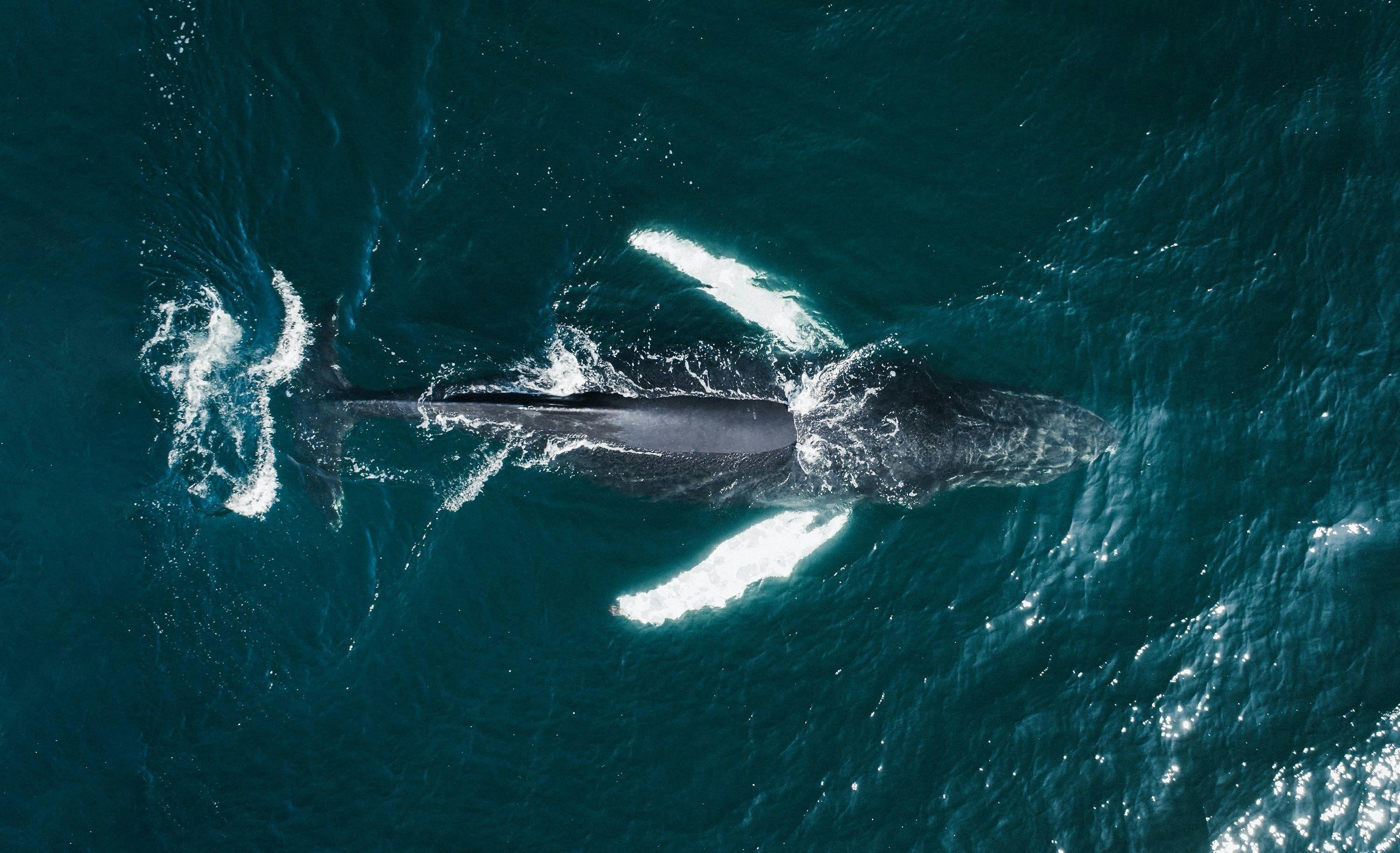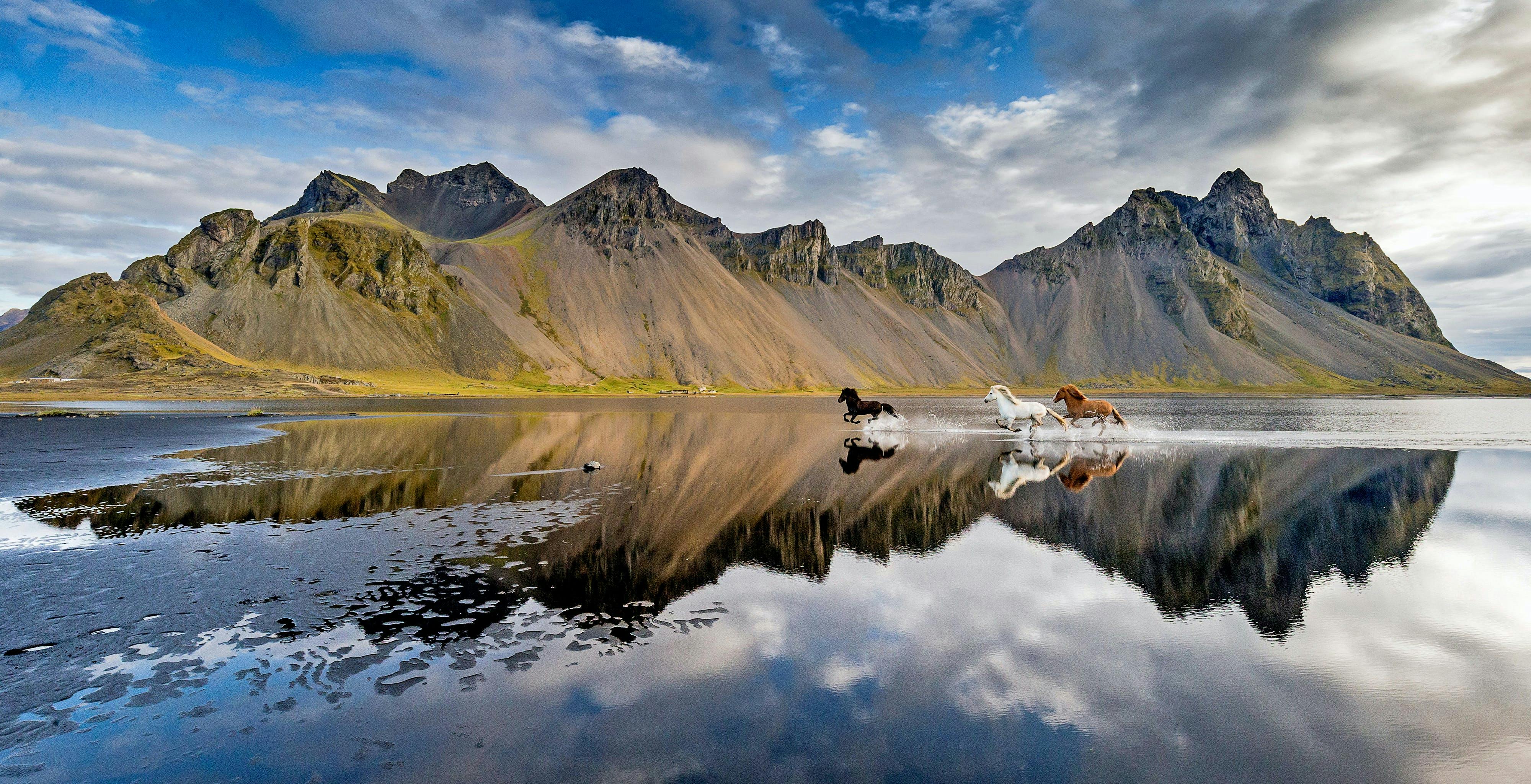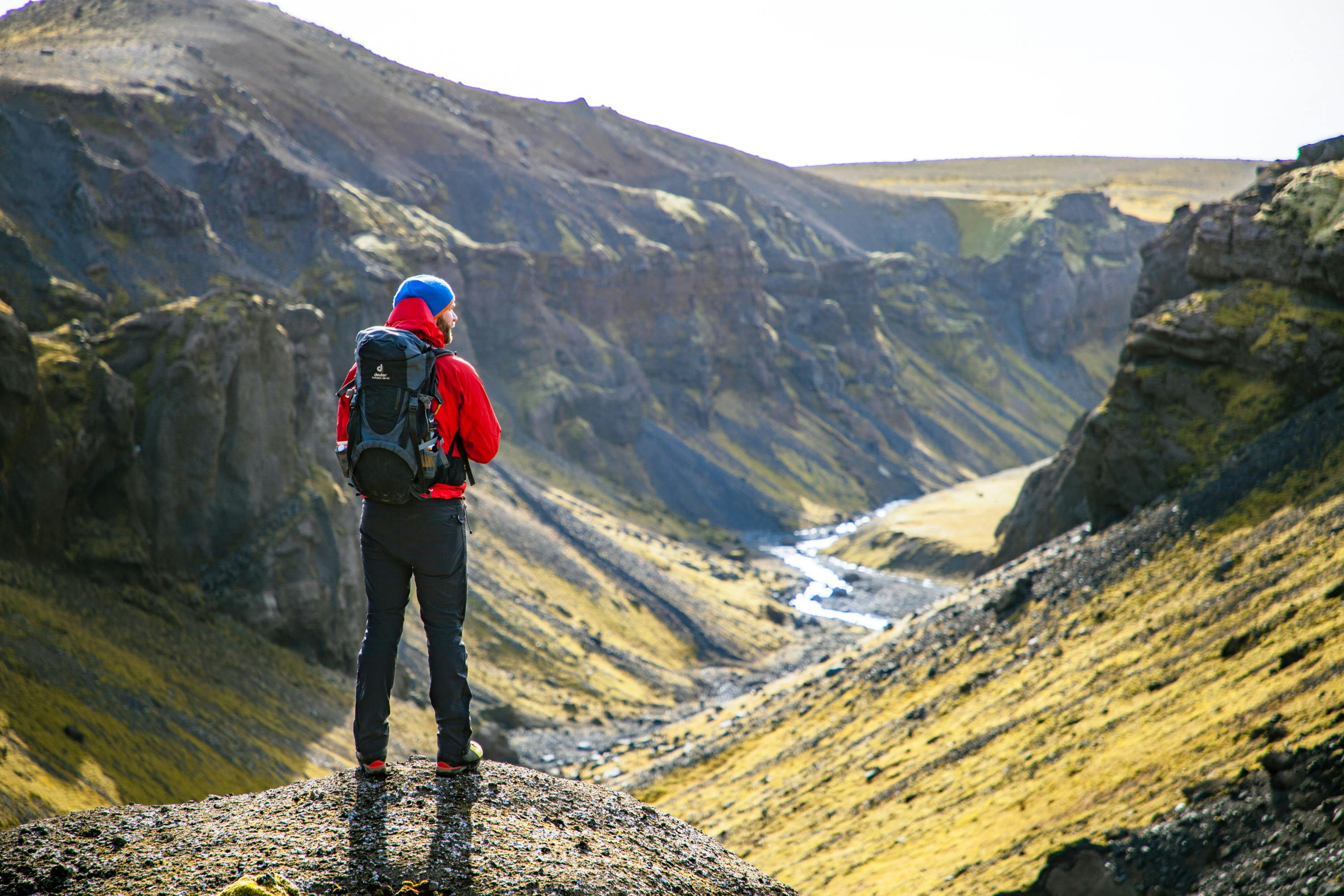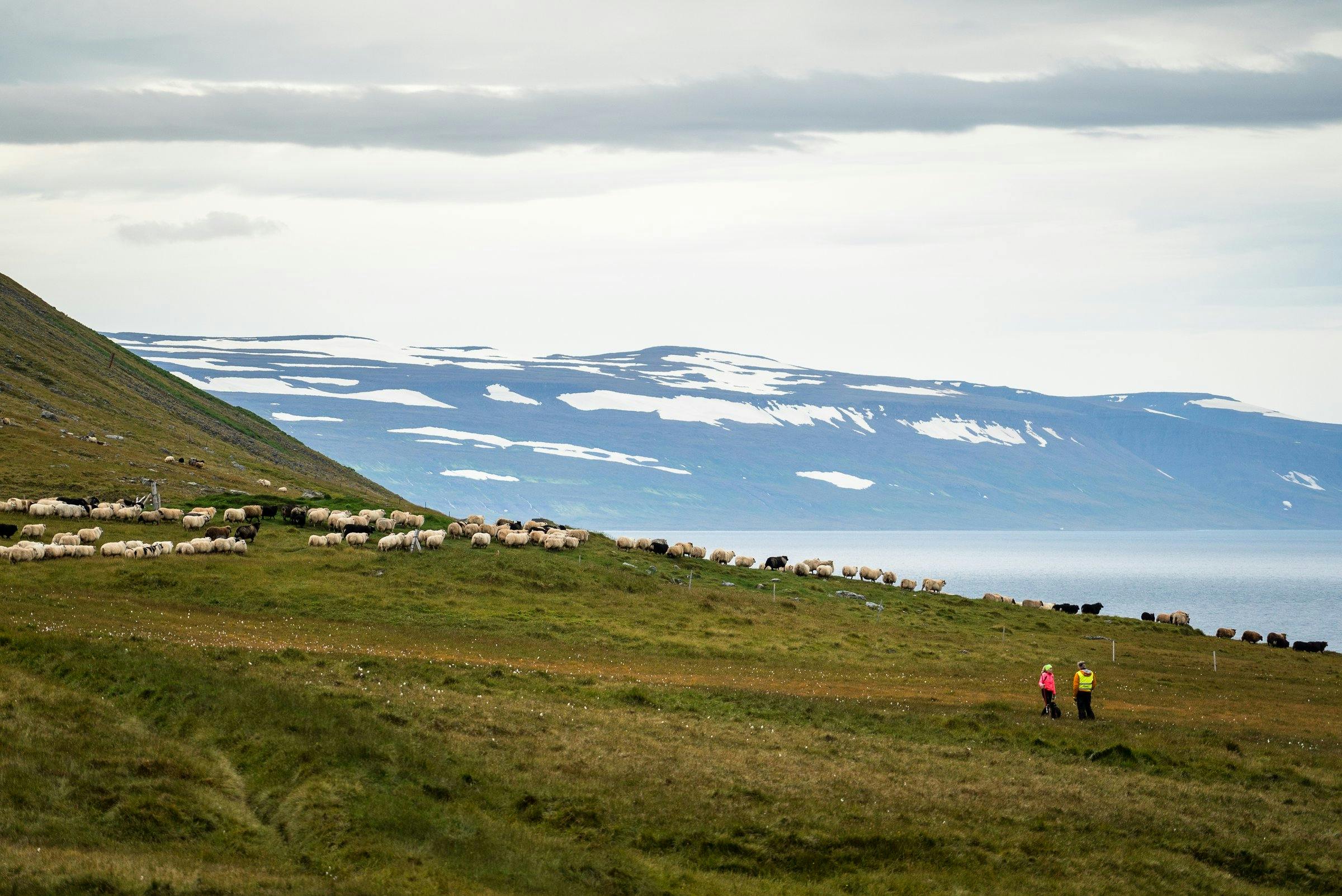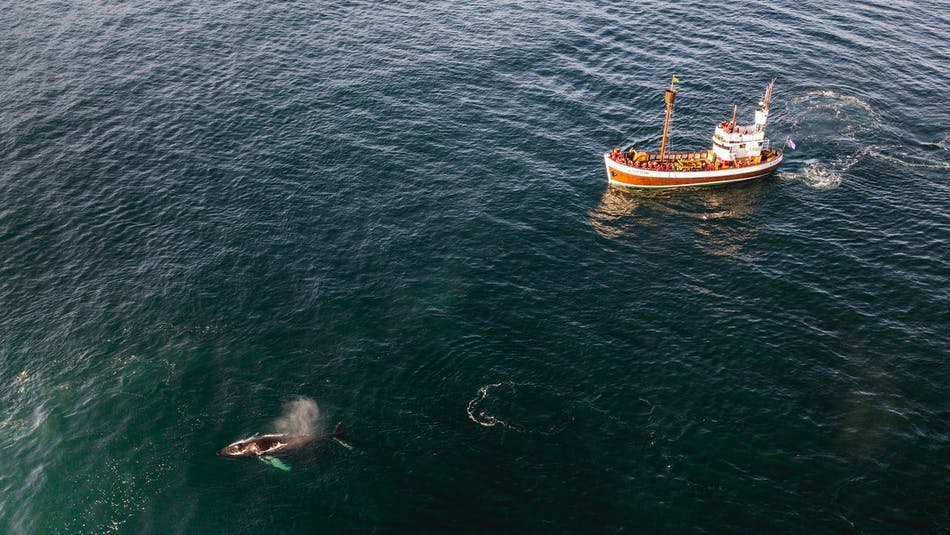
Searching for the blue whale
Earth's largest animal migrates to Icelandic waters each summer. To find the blue whale requires luck and a trip to the northern Skjálfandi Bay.
Húsavík is a town of one harbor, four whale-watching companies, and a population that weighs about the same as the blue whale. And that's not because the 2,000 people who live in Húsavík are exceptionally slim! Averaging 155 tons, the blue whale is biblically giant! It's the approximate length of a Boeing 737 aircraft and has a heart the size of a Volkswagen Beetle. Impressed? Its veins are wide enough to be a waterslide!
Mystery Whale Arrives
About one thousand blue whales are estimated to live in the North Atlantic Ocean. They all lead private and mysterious lives. Marine biologists who make it their life's mission to study them don't know, for the most part, where Earth's enormous animal hangs out and makes love. But one thing has emerged in the past ten years: The blue whale really, really likes Húsavík, the "whale-watching capital of Europe" by Skjálfandi Bay in northeast Iceland.
Researchers have identified 148 individual blue whales in Skjálfandi bay, about 15 percent of the entire regional population, in the past ten years. They come to feed, together with other migrant marine mammals, and the most likely time to see them is late-June. But sporadic sightings are made throughout the summer—the first sighting in 2021 was on 18 June.
"People don't always realize how magnificent and special it is to see the blue whale," says Marianne Helene Rasmussen, a Húsvík-based research professor at the University of Iceland. "They are possibly the largest-ever animal to inhabit Earth. Larger than the dinosaurs."
Marianne's first blue whale sighting in Iceland was after a 14-hour whale-watching trip in 2004. Only in the last decade, with changes in the ocean's food-web linked to climate change, have the blue whales regularly been spotted in less than a two-hour sailing distance from Húsavík.
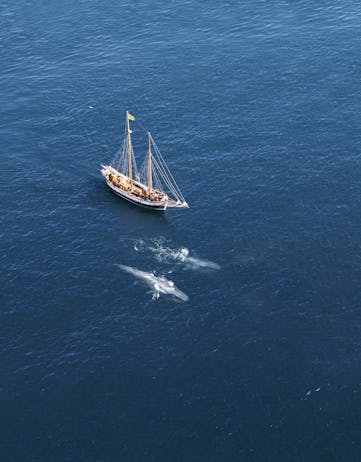
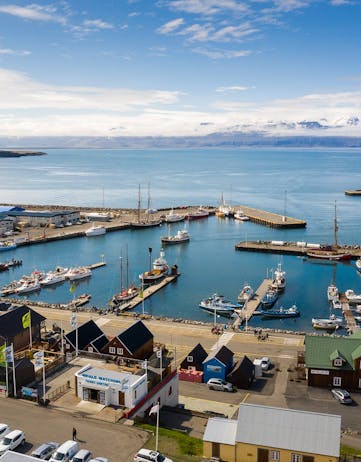
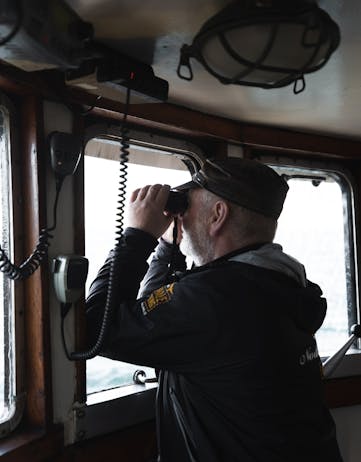
Hanging Out with Humpbacks
According to whale-watching companies in Húsavík the blue whale is spotted on 2–5 percent of all tours, typically early summer. Sightings always come down to luck. The whales need to breathe oxygen at a 20-minute interval, give or take, and that is the whale watchers’ only chance to catch a glimpse of them.
Skjálfandi bay is wide and deep and with a delta from a powerful glacier river believed to stir up the ecosystem. Few places in Europe offer the same variety of whale species. The humpback is most common, known for breaching and acrobatic stunts.
Sperm whales and fin whales frequent the popular feeding-ground in growing numbers but are still relatively rare. Overall, according to log-books going back several years, whales and dolphins are spotted in about 98 percent of tours.
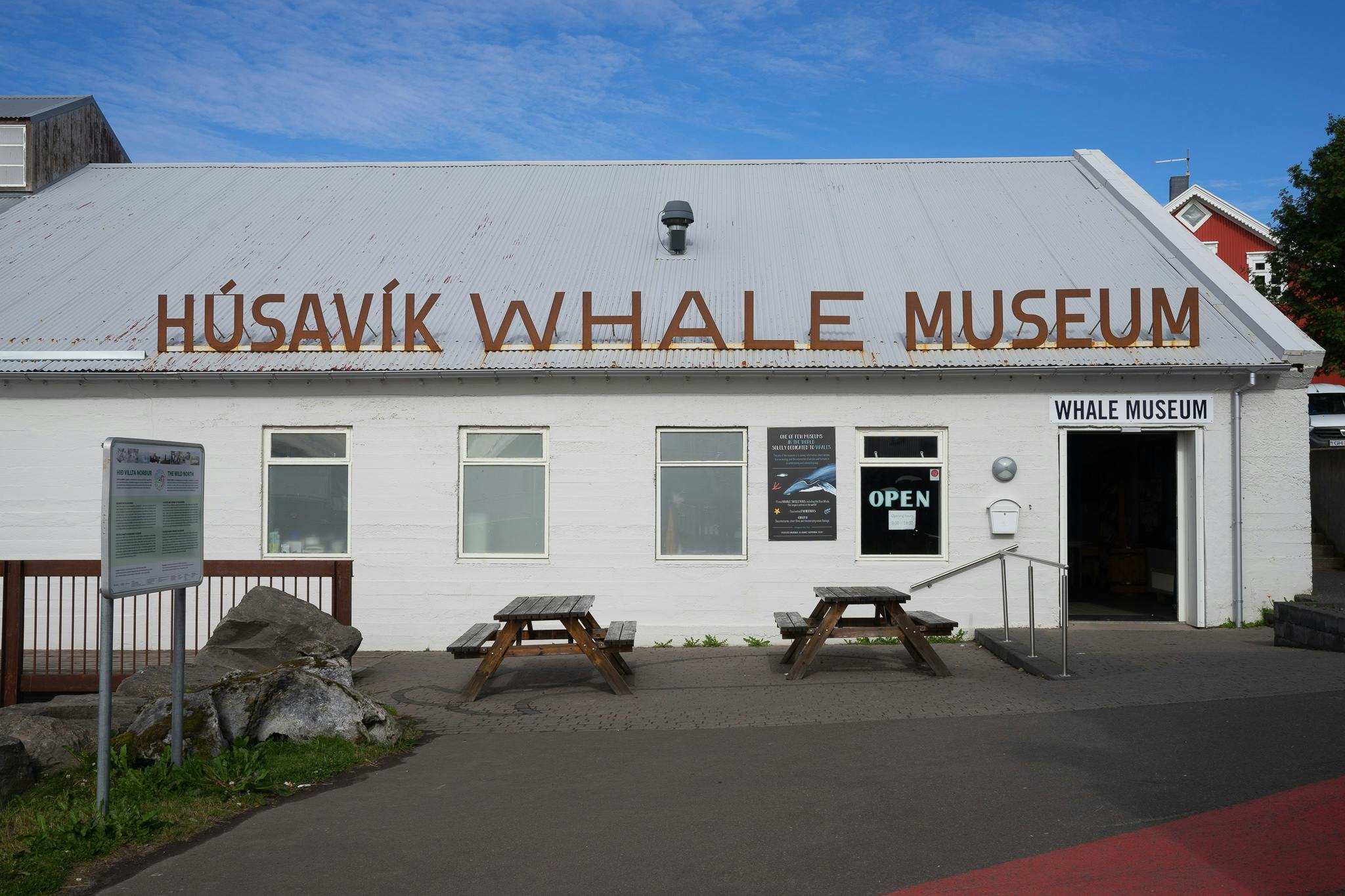
The Whale Museum
In Húsavík you’ll find the ambitious Whale Museum, housed in a renovated slaughterhouse overlooking the harbor. Three years ago, the museum installed a blue whale skeleton recovered from a 2010 corpse found on a remote beach in North Iceland. The whale is displayed upside down, with the rib bones reaching towards the ceiling, and isn’t visible until halfway through the museum. “It catches visitors by a surprise, especially those who are not expecting to see one,” says museum director Eva Björk Káradóttir.
The Known Unknown
Where do the blue whales go after the feeding season?
The Icelandic Marine Research Institute has tried attaching trackers to the blue whales of Skjálfandi, to see where they spend the remaining 11 months of the year. So far, the trackers have lost signal when the whales swim out of Icelandic waters.
A new method is underway but until then we can only assume that the whales are all gathered for a karaoke deep in Herman Melville’s watery part of the world.
